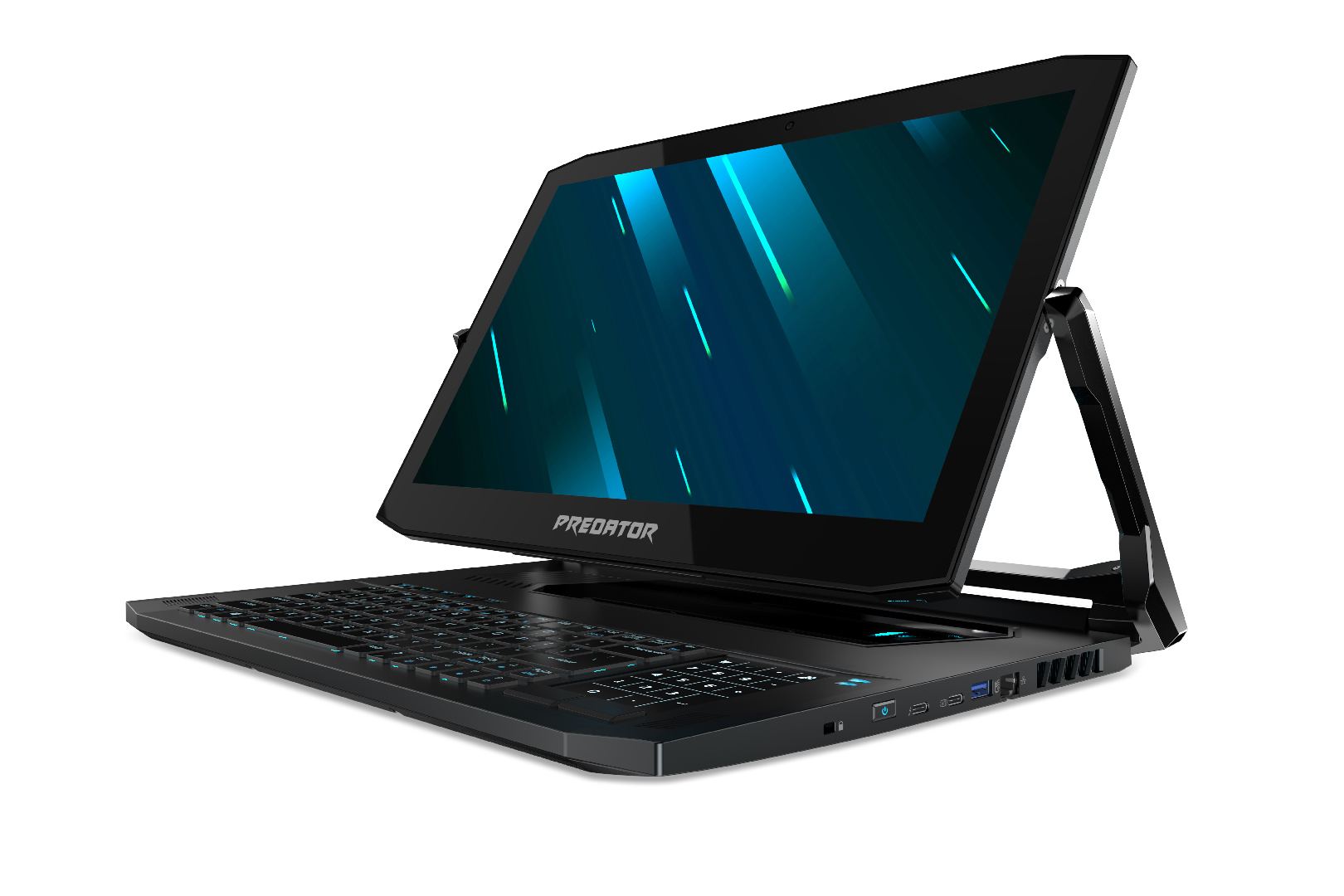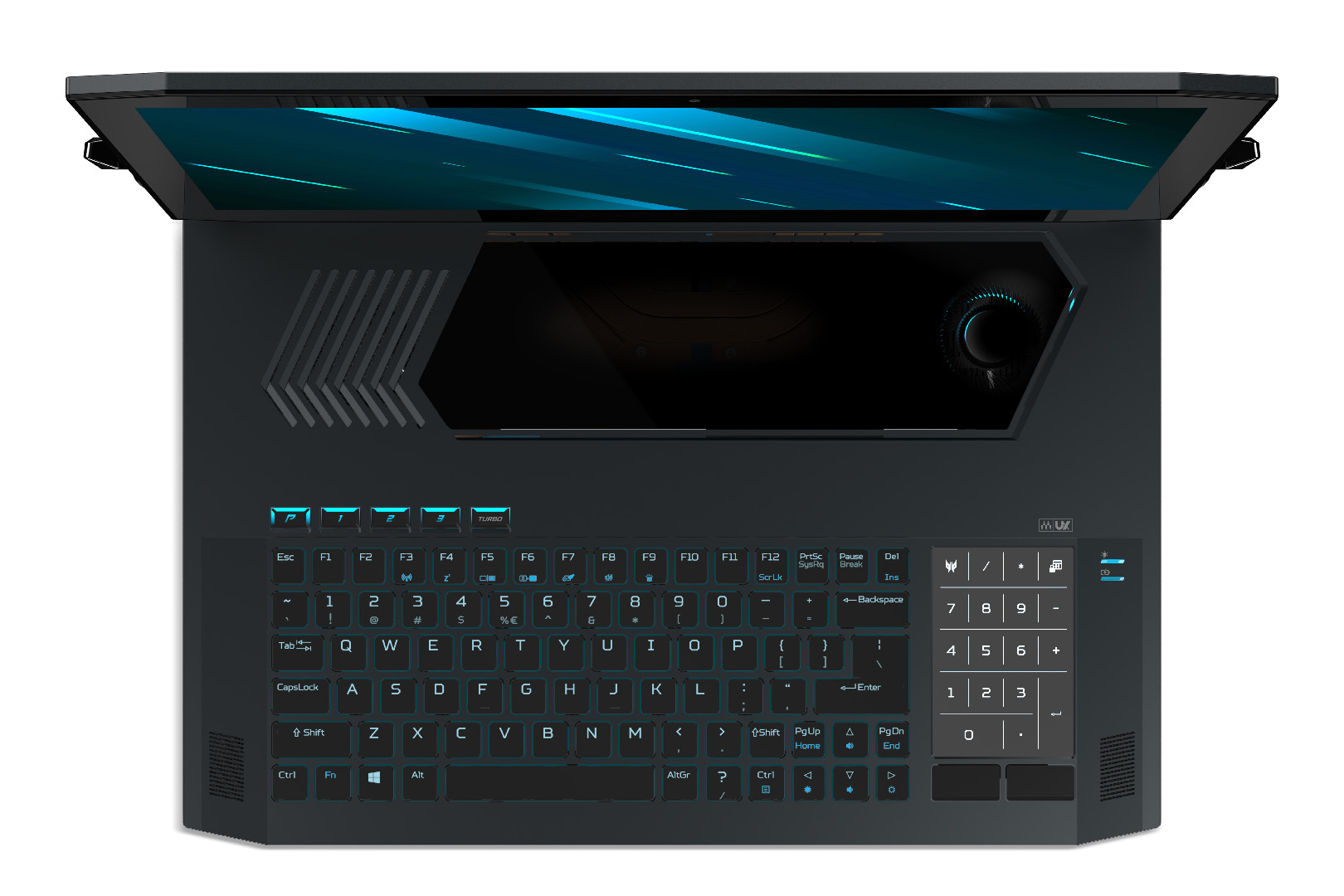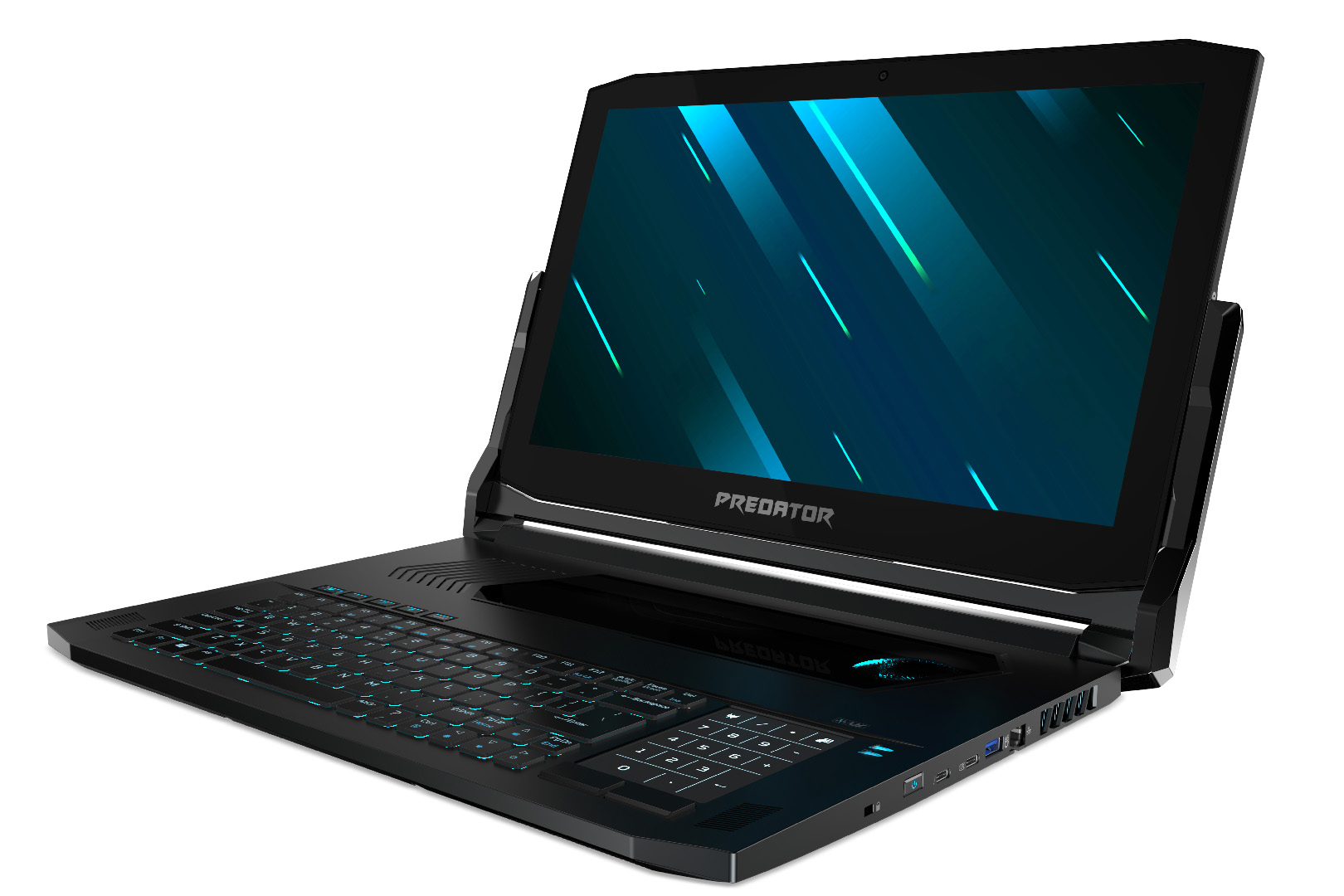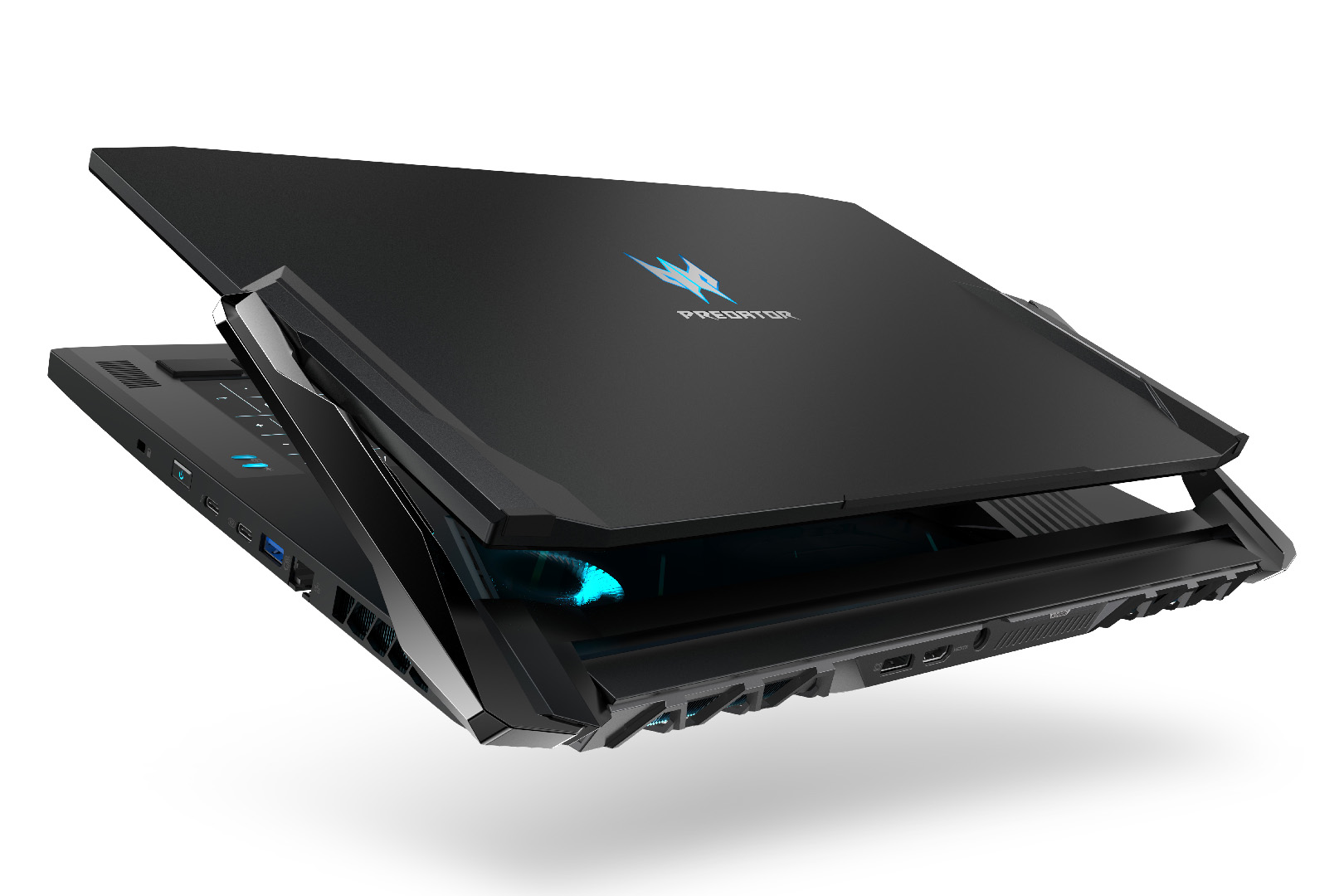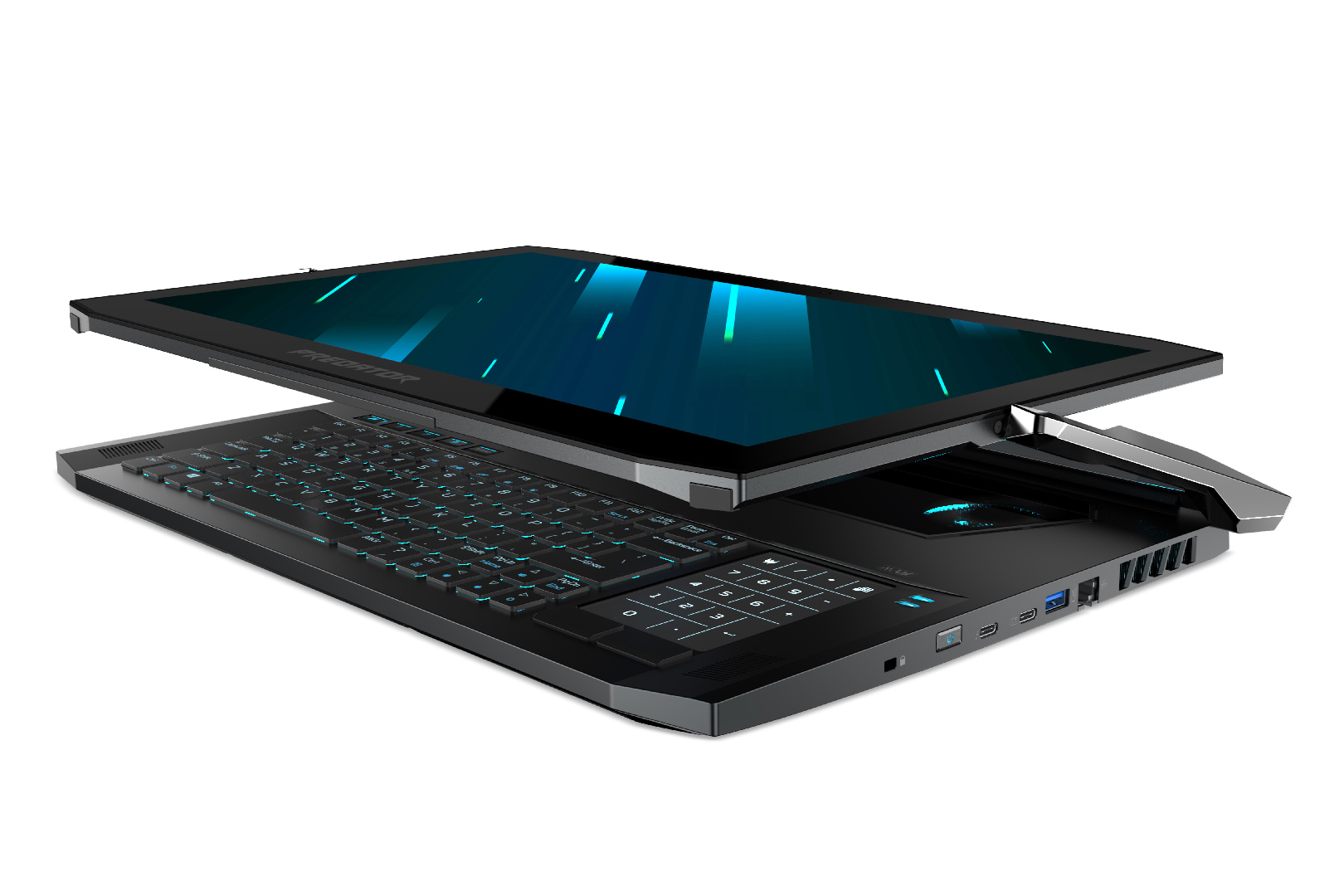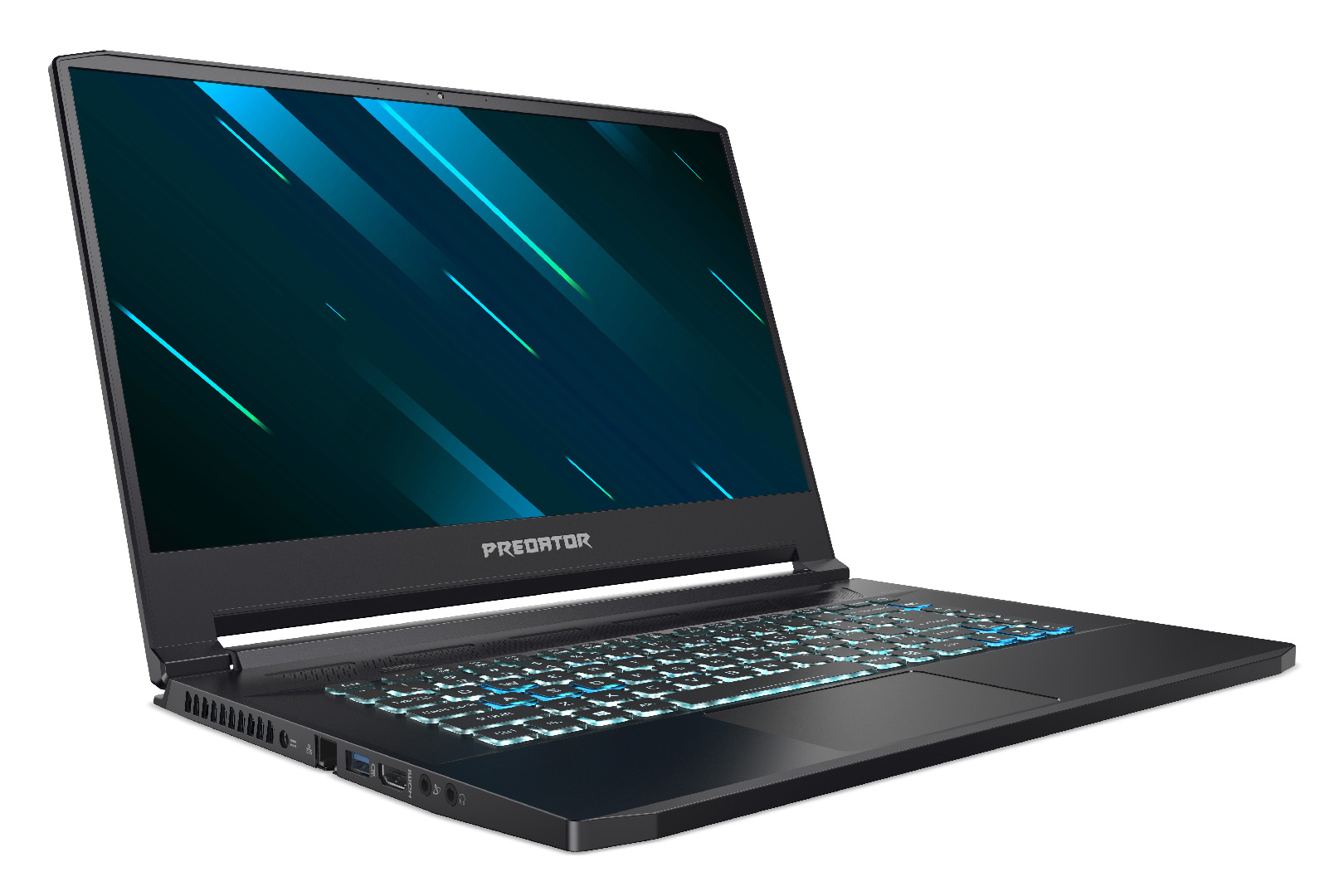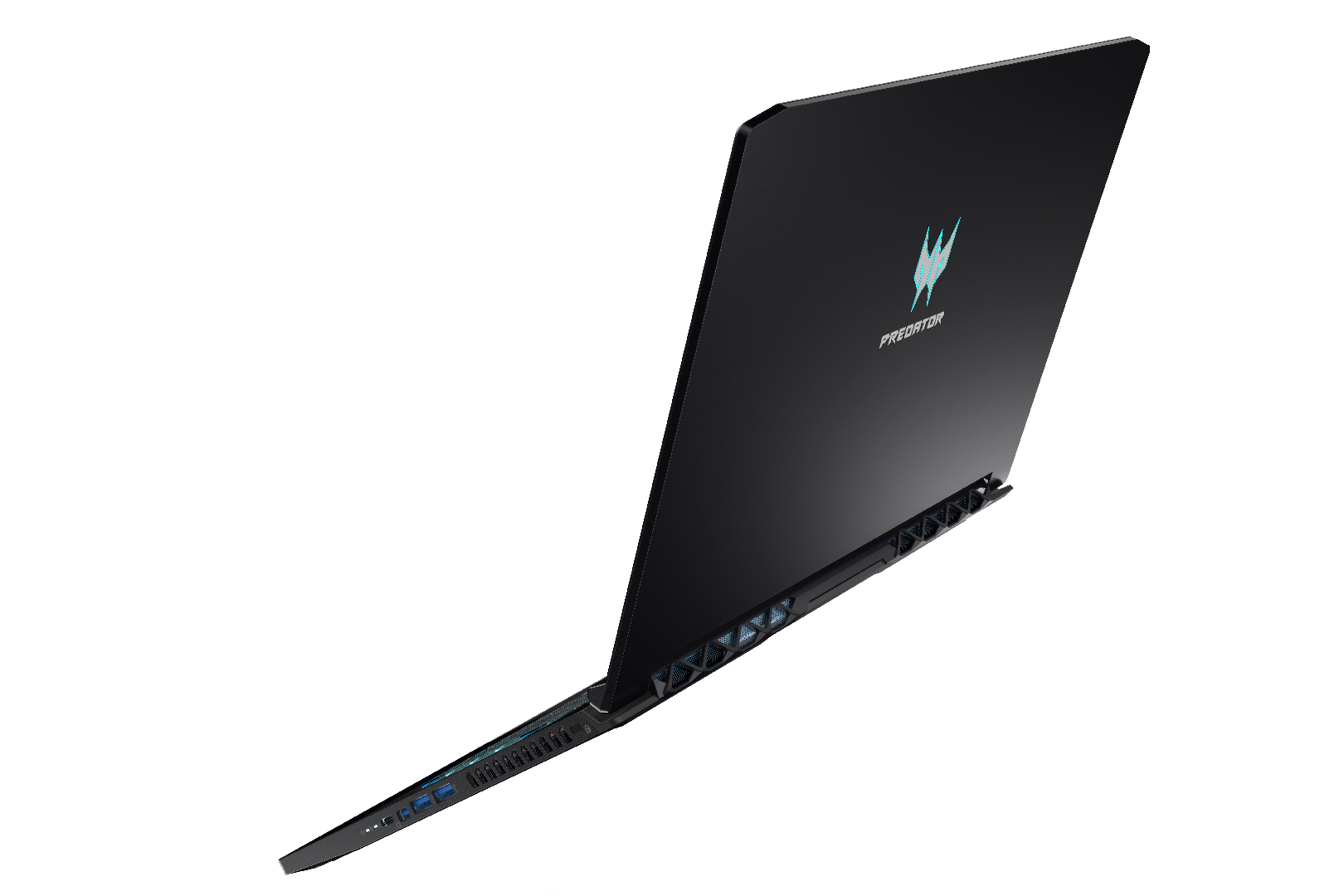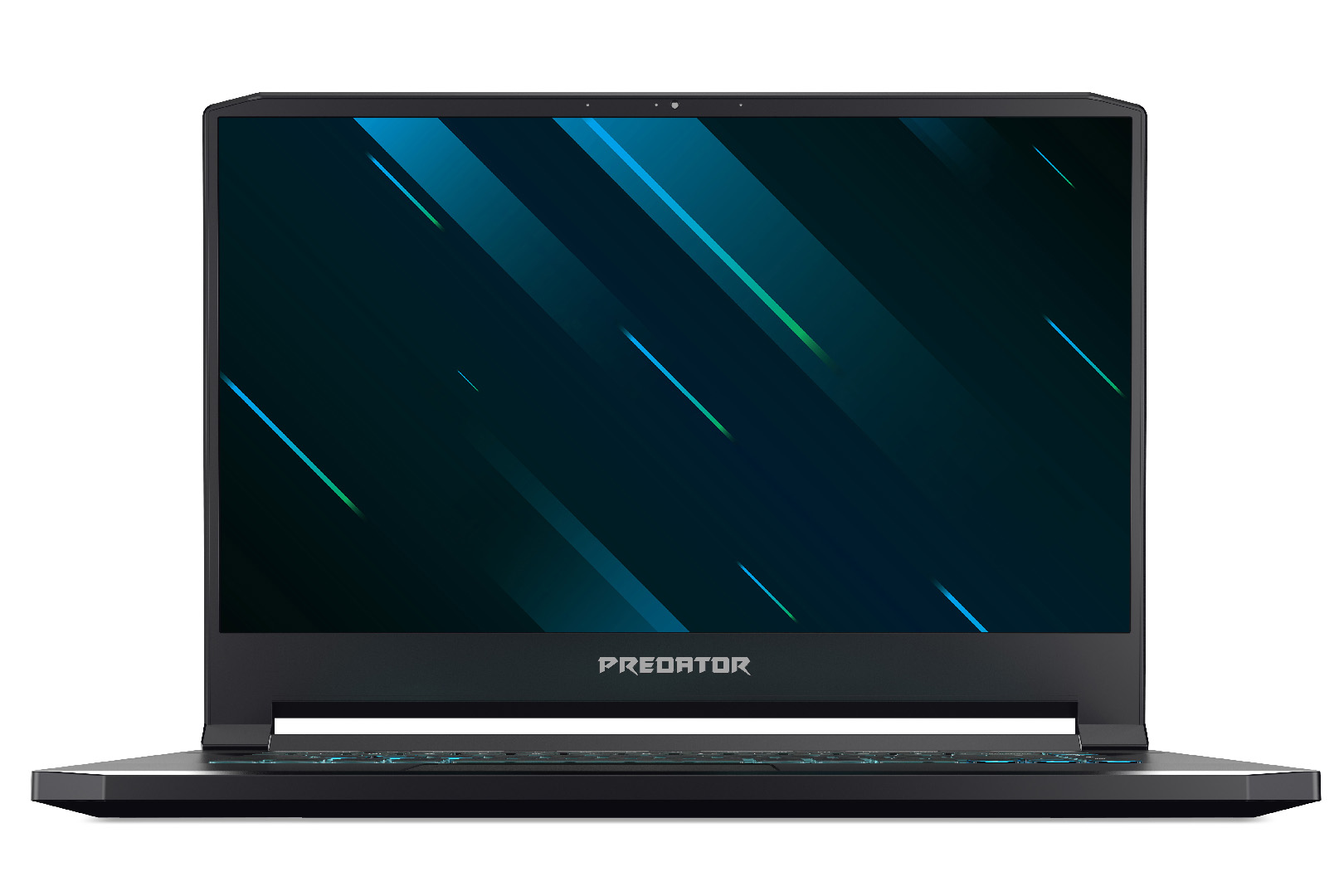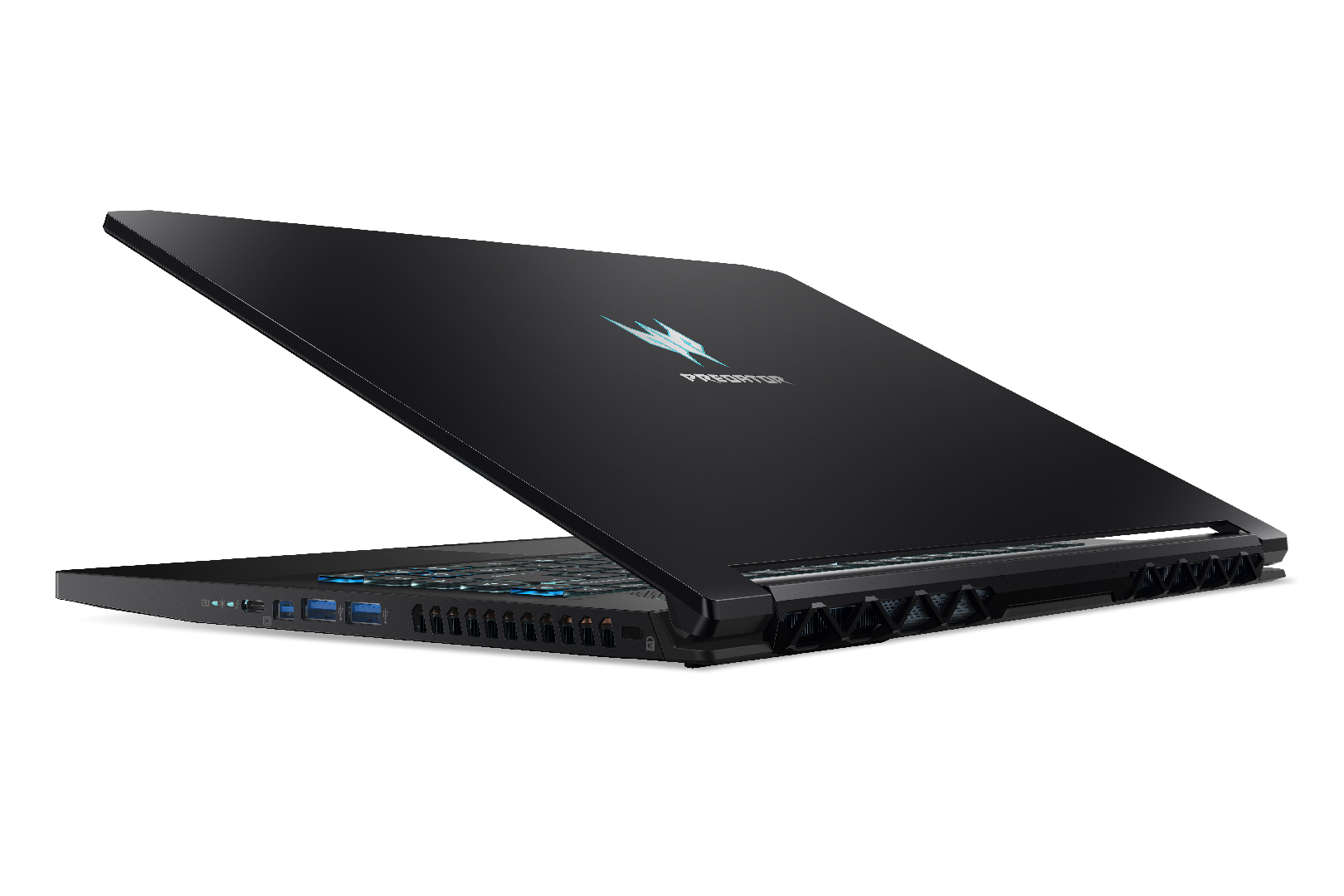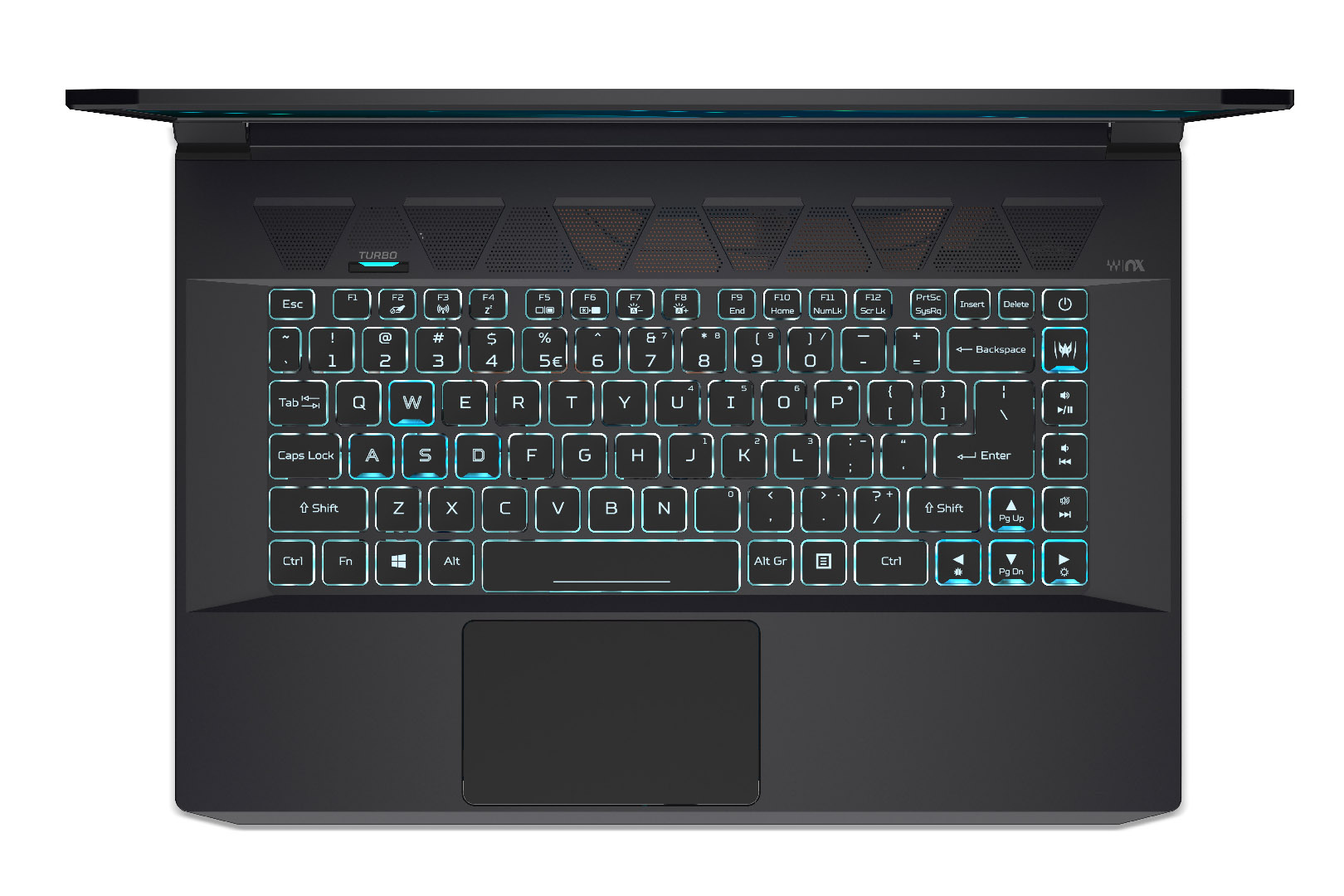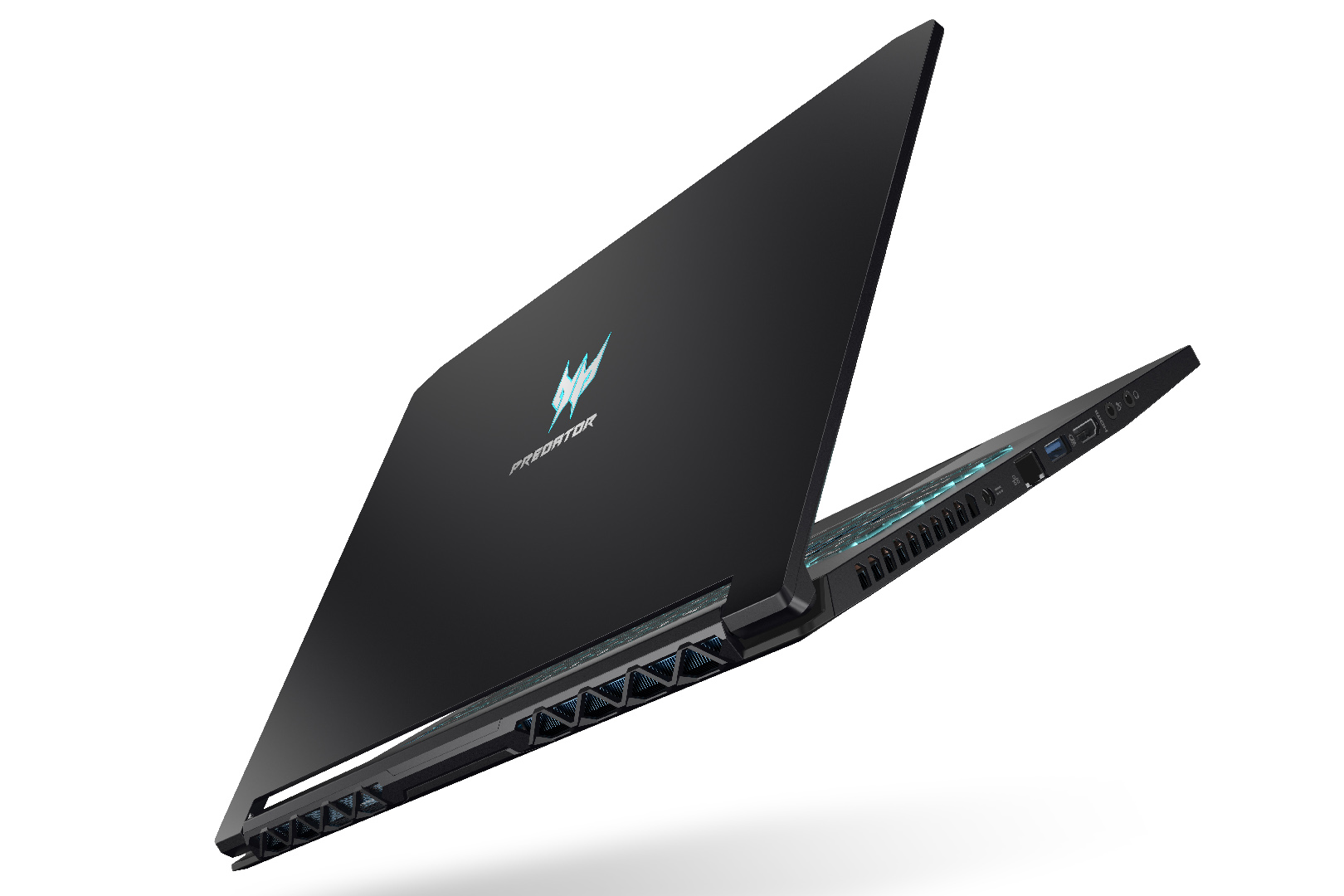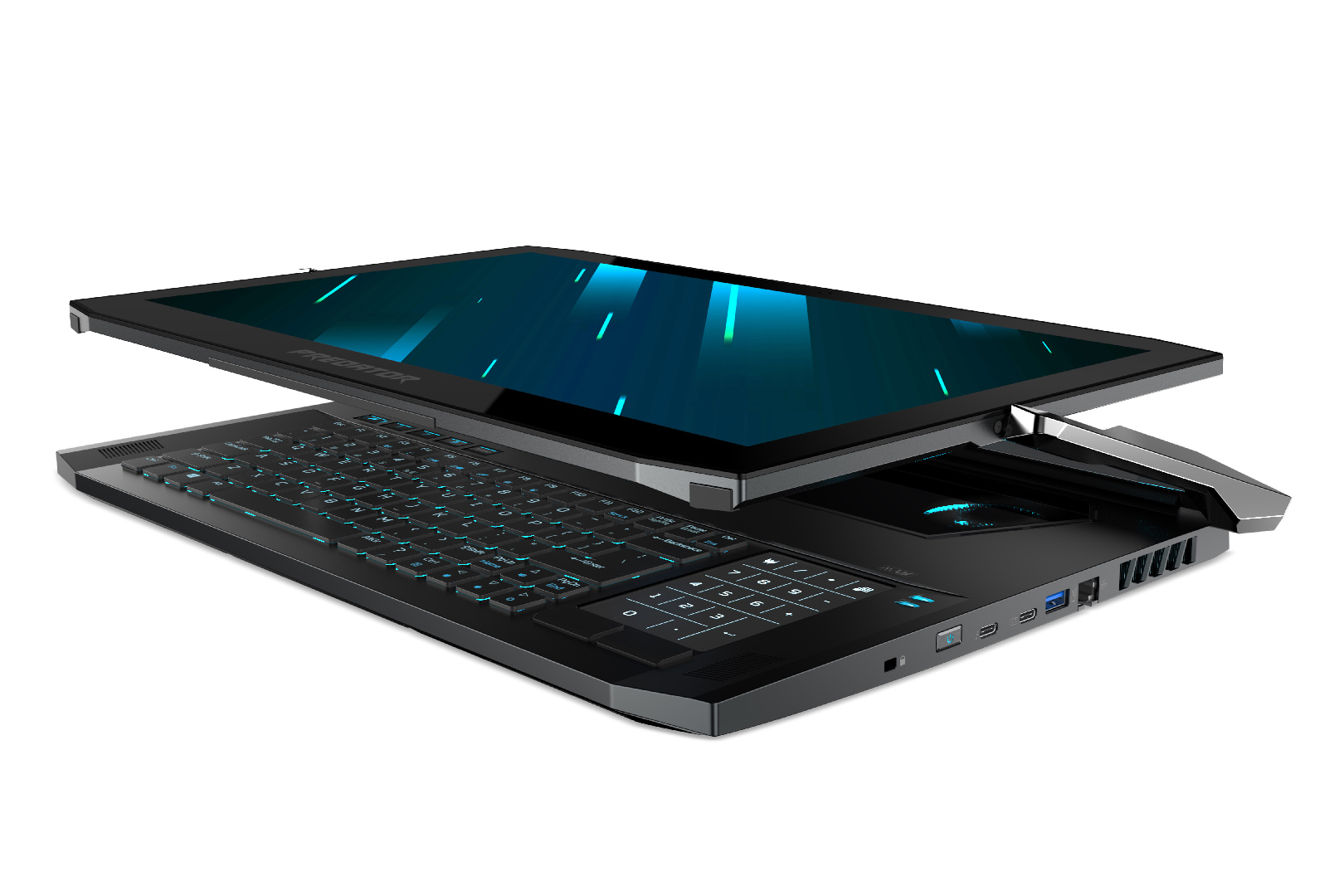
Acer’s latest creation, the Triton 900, immediately caught our eye at CES. The 17-inch massive 2-in-1 gaming laptop seeks to deliver a world-class experience with a powerful 8th generation Intel Core i7 CPU and Nvidia GeForce RTX 2080 GPU under the hood. Flipping forward, and rotating like a Cirque du Soleil acrobat, the machine uses what Acer calls a Ezel Aero Hinge to flip seamlessly between four different modes.
More CES 2019 coverage
- HP’s new Chromebook 14 comes with AMD inside, instead of Intel
- HP Omen 15 (2019) gaming laptop: Our hands-on review
For a gaming laptop, the Triton 900 is quite thin coming in at just .94-inches, and that’s without factoring in the mechanisms needed to turn this behemoth into an easel with the flip of a few hinges. Acer notes that the laptop offers four different modes.
A display mode with the screen flipped over backward, an easel mode that brings the screen forward, a stand mode for a tablet-like experience, and, of course, a standard clamshell laptop mode. And don’t worry about the chassis staying dark in any of the four modes, thanks to Acer’s Predator RGB Assault lighting system.
The Triton 900 isn’t light on specifications either, as it’s a gaming machine. A look under the hood showcases specs up to a six-core 8th generation Intel Core i7 CPU, NVMe PCIe SSDs in RAID 0, up to 32GB of DDR4 memory, and an Nvidia GeForce RTX 2080 GPU. The power will be needed as the Triton 900 powers a 4K IPS display with Nvidia’s G-SYNC technology. Other gaming extras include a built-in Xbox controller receiver and a Waves NX head tracking module for 3D audio.
Not looking for a 17-inch hybrid Windows machine? Acer has also announced a smaller brother to the Triton 900, the 15.6-inch Triton 500. It won’t be performing any 2-in-1 maneuvers, but it will offer a Full HD 144Hz gaming experience in a thin .70-inch chassis that weighs in at just over 4.5 pounds. Under the all-metal chassis, you’ll find an Intel Core i7 processor, NVMe PCIe SSDs in RAID 0, up to 32GB of DDR4 memory, and an Nvidia GeForce RTX 2080 Max Q GPU.
The Acer Predator Triton 900 will be touching down in North America this March starting at $3,999 — international customers will also find the machine in their respective countries in March. The Acer Predator Triton 500 will be available in North America this February starting at $1,799, with international customers also seeing the machine in their respective countries in the same month.
Editors' Recommendations
- This Acer Nitro gaming monitor is the first to support HDMI 2.1 for consoles
- Acer Predator Triton 500 is an unstoppable gaming laptop with a 300Hz screen
